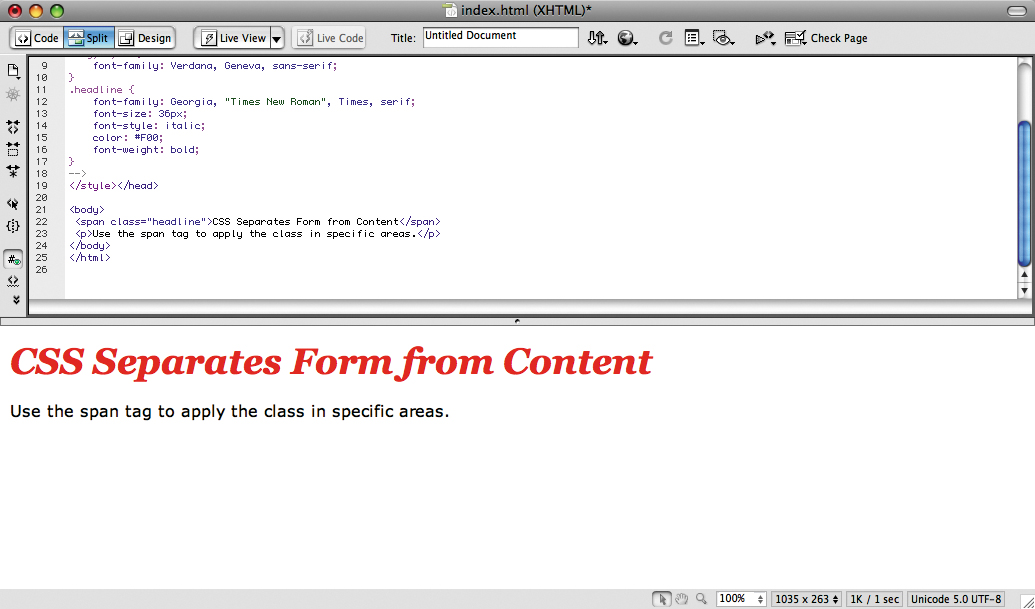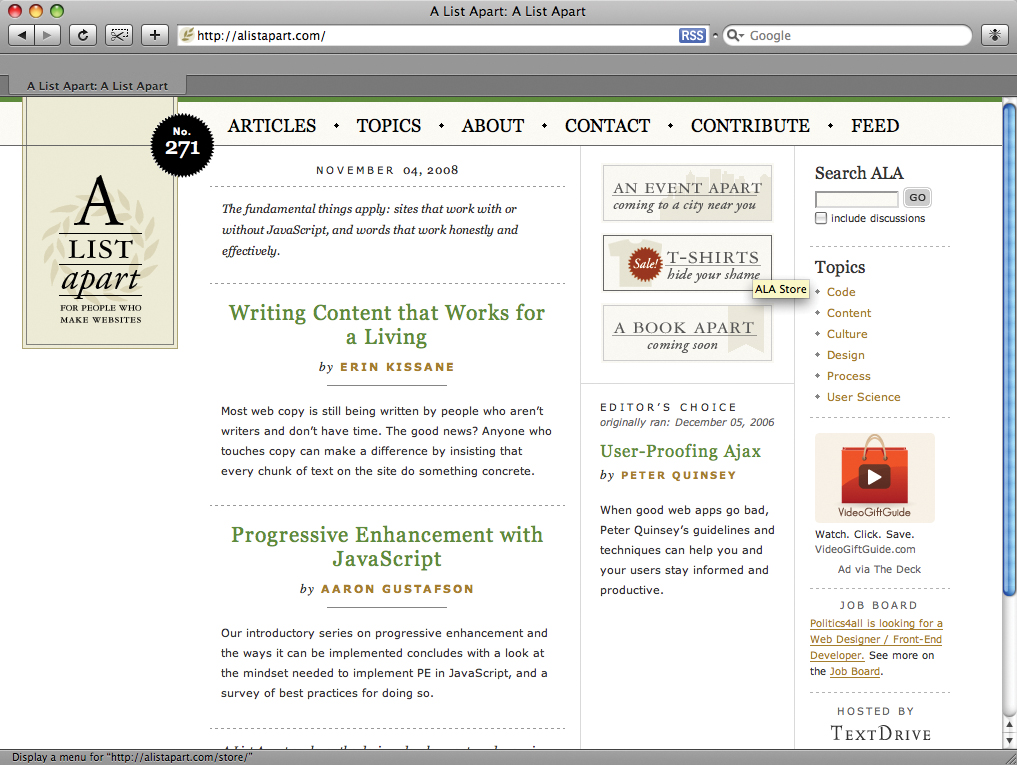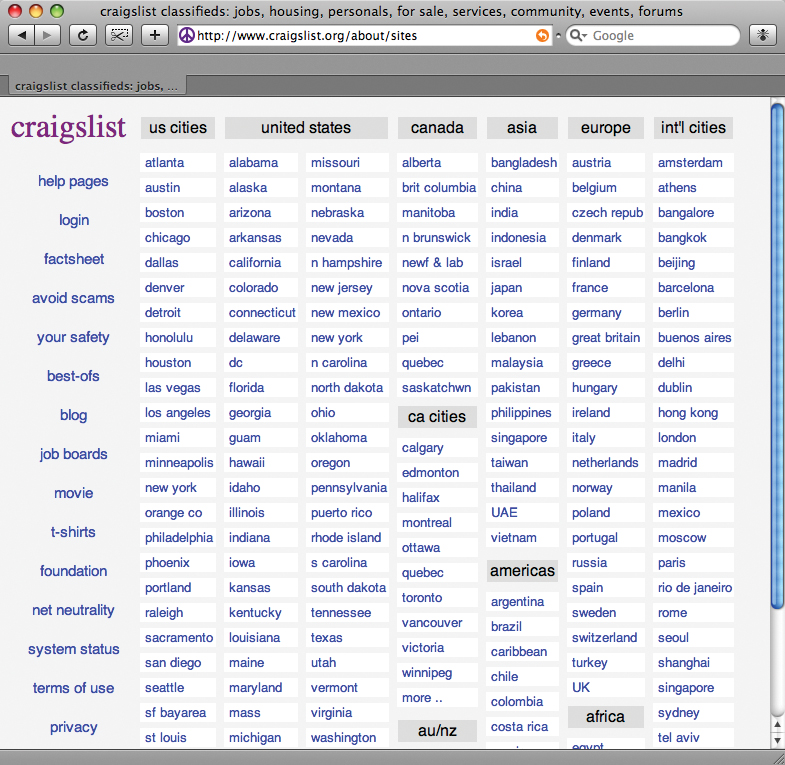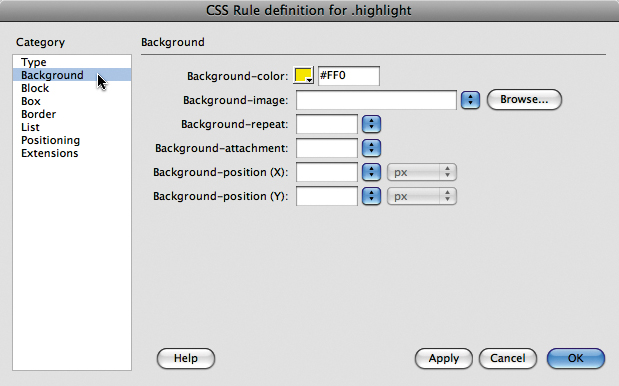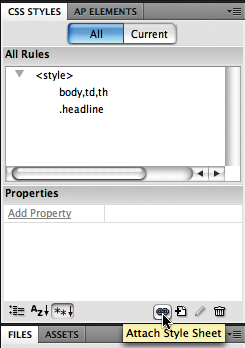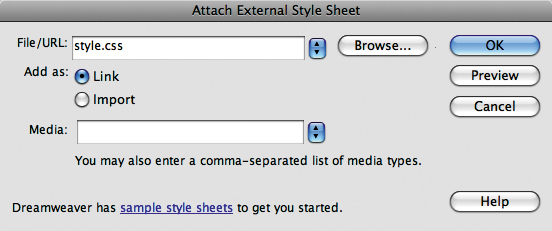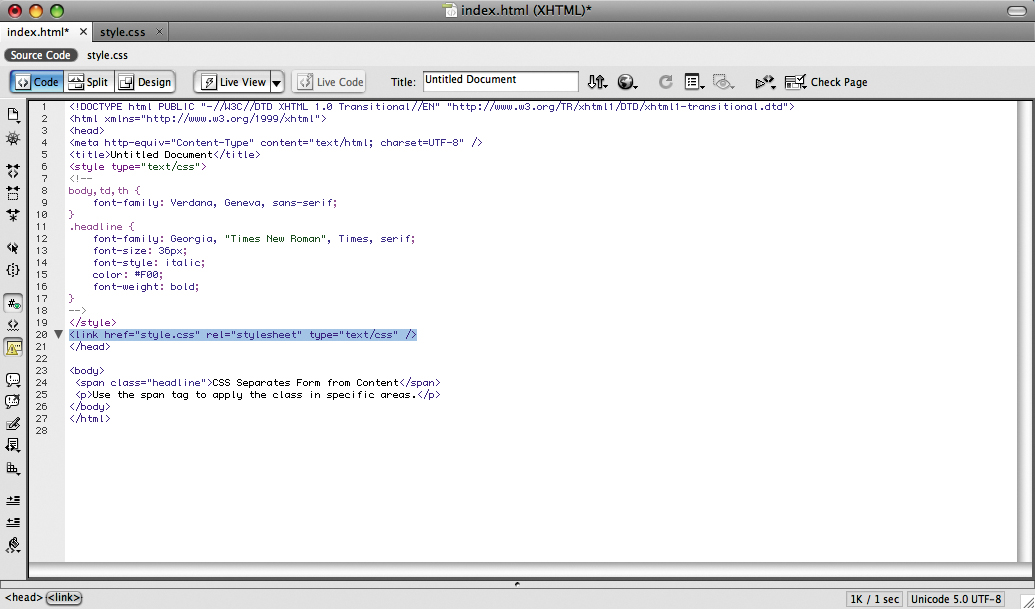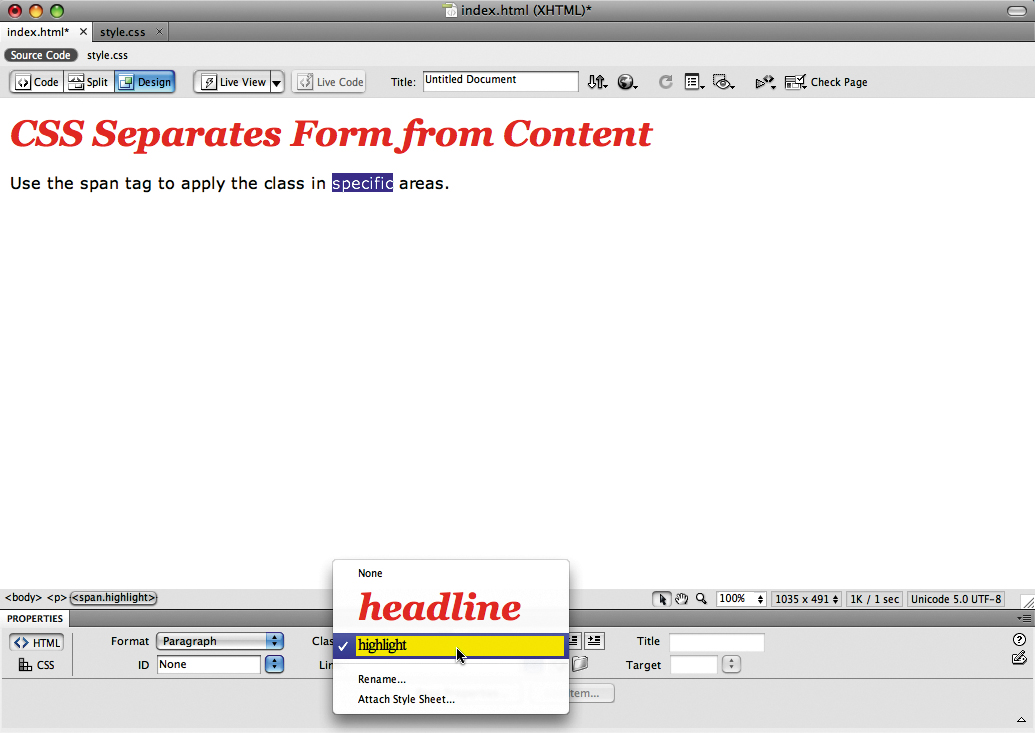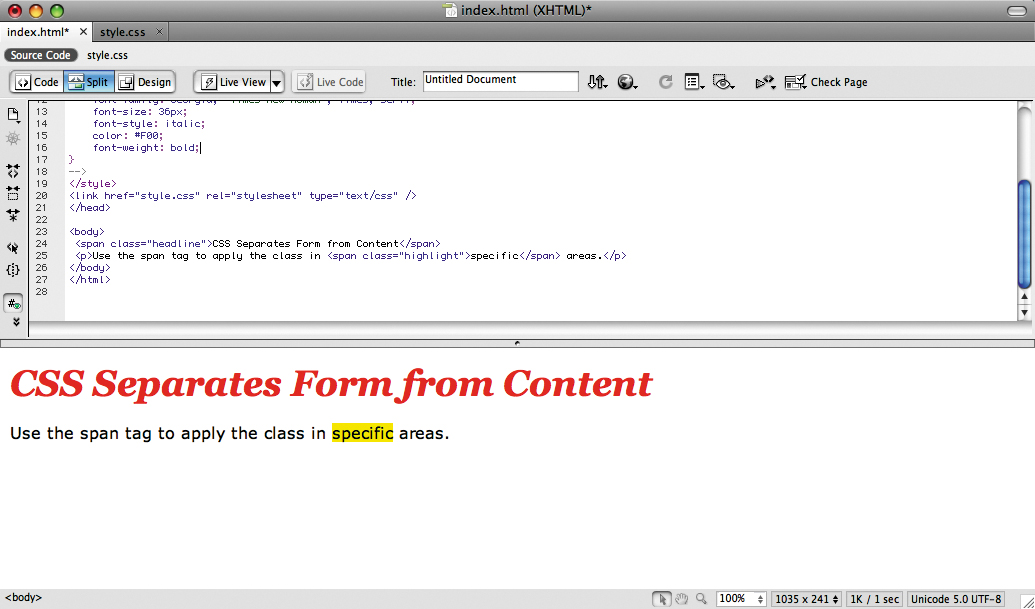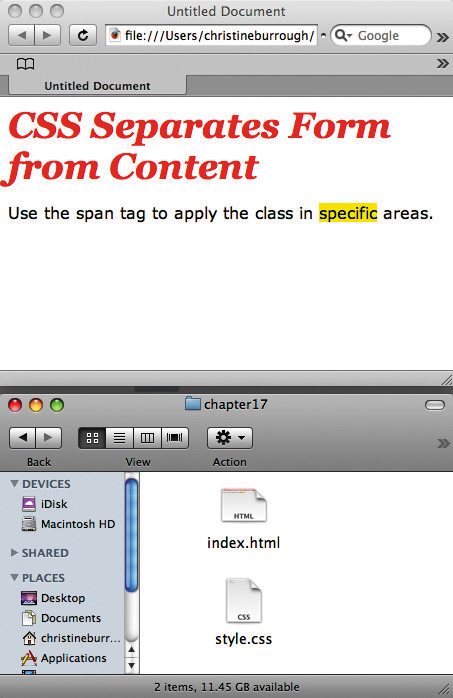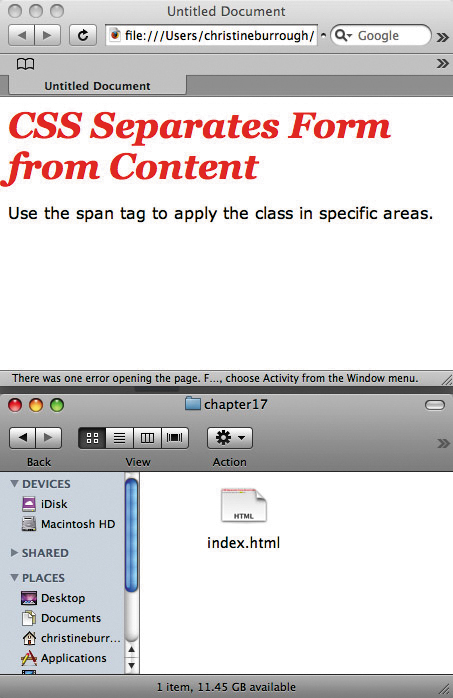Chapter 17 CS4
Download Materials for Chapter 17
Click here to download chapter 17 work files.
Chapter 17: Form and Content on the Web
In the last two chapters we left many aesthetic choices out of the exercises and focused on the tools for building code. Aesthetics (how the page looks) is achievable through code, and must not be left out of the conversation. As American architect Louis Sullivan has said, "form follows function". In this chapter we will focus on a key concept in web design: keeping the structural markup separate from the code that controls the aesthetics. In other words, content is contained separately from the style applied to it. There are a few reasons for keeping the two separated, namely: 1. code is displayed on different browsers, each with different styling information; 2. for the purpose of accessibility there are web standards that rely on this separation; and 3. simply for efficiency as styles are easily reused or modified. The separation between content and form is realized when an HTML page full of content is connected to a cascading style sheet (CSS) that applies the aesthetics by treating the page stylistically. A List Apart Magazine explores the design, development, and meaning of web content, with a special focus on web standards and best practices" ([1]]). This website is an excellent resource for developing web designers and information architects. In addition to the wealth of articles, the site itself is a well-crafted engine fronted with easy to navigate typography. Notice the contrast in typographic hierarchies from the search area to the body content of the page, in the headers and links.
Craigslist.com is a popular website that facilitates an exchange of information between people looking for buyers/sellers/traders and every other possible relationship to commodity, personals, or idea exchange. When asked to think about design, it may not be the first website that comes to your mind. However, as a work of information design, the type is easy to read and even easier to navigate. The hierarchy among the various types of exchanges and locations world-wide is intuitive.
So far we have modified page properties and placed links and images on the HTML page using Dreamweaver. The default font, font size, text color, and background color are all styles that can be modified, as well as the appearance of links such as color, underline, and rollover settings. Certain aesthetic options are limited on the web. For instance, in order for a web page to load a specific font, the font must be installed on the user's computer. If the font is missing the browser will load a different font. Therefore, most web pages are designed using "system" fonts (those installed on the computer at the time of purchase), including Helvetica, Arial, Times, Georgia, Verdana, Courier and Geneva. In this chapter we will begin to separate the content of the page from its formal properties using cascading style sheets (CSS).
Exercise 1: Apply a style
So far we have modified the HTML page properties and placed links and images on the web page using Dreamweaver.
Template:Infobox
Until now, these page elements have all followed the default settings for font, font size, text color, and so on. By using CSS, we can control these and other design settings. We will separate the content of the page from its style properties, which will be stored in the CSS file.
Note: Remember, certain aesthetic options are limited on the web. For instance, in order for a web page to load a specific font, the font must be installed on the user's computer. If the font is missing, the browser will load a different font. Therefore, most web pages are designed using "system" fonts (those installed on the computer at the time of purchase), including Helvetica, Arial, Times, Georgia, Verdana, Courier, and Geneva.
1. Open Dreamweaver and choose HTML from the Create New area of the Welcome Screen.
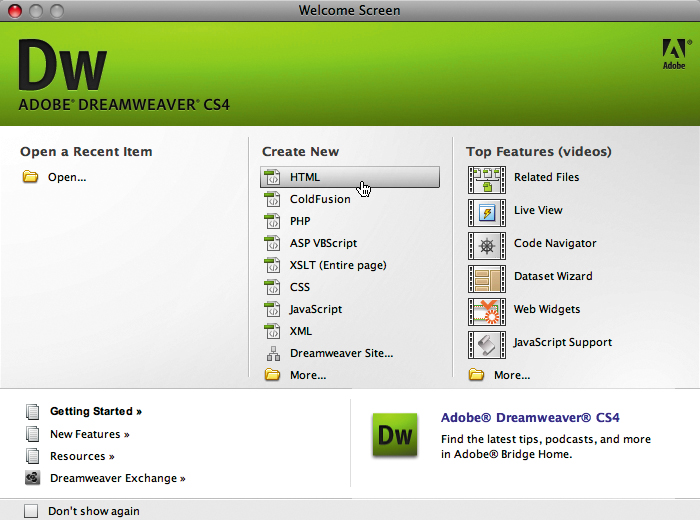
Template:Infobox
2. Before adding content to the HTML file, choose File > Save As and save the file as index.html into a folder you will use for this chapter. We saved our file in a folder on the Desktop called chapter17.
3. Evaluate the code of the HTML file. You can do this in Code view or you can open the saved HTML file in a web browser and use the View menu to see the source code. So far the code only contains HTML.

4. Open the Page Properties dialog box by choosing Modify > Page Properties and change the default font. We used the Page font pull-down menu to choose the default font: Verdana, Geneva, sans-serif. Click OK after choosing a font.
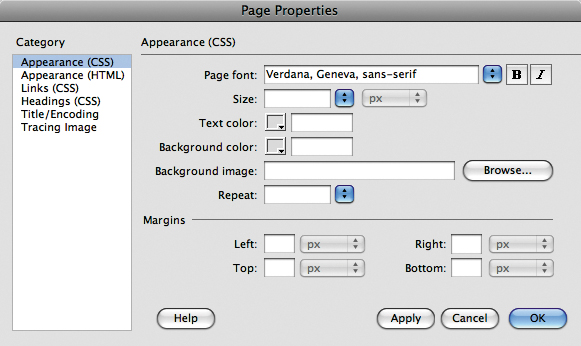
5. Dreamweaver saves the default HTML page settings as a style. Choose File > Save. Look in Code view or reload the page in the browser so you can see the changes. We will evaluate this code in the next exercise.

Exercise 2: Evaluate the code
Dreamweaver adds the code for styles in style tags in the <head> section of the document. Styles are written in declaration blocks. Declaration blocks contain properties and values. Here we have a declaration block for the body of the HTML page. Inside the style tag, you will see:
body, td, th {
font-family: Verdana, Geneva, sans-serif;
}
In this code, font-family is the property. "Verdana, Geneva, sans-serif" is the value.
Exercise 3: Create a new rule
Styles can be created, modified, and deleted using the CSS Styles panel. To open it, choose Window > CSS Styles. You can redefine a default HTML tag (which we did in Exercise 1) or create a custom style called a class. We will work with classes throughout the remaining exercises. A class is a modifier that can be applied to an HTML tag in order to add a style.
1. Double-click the CSS Styles tab to expand the panel. The style for the font-family property that we just made is saved in this panel. Double-clicking the font-family property for the CSS Rule definition dialog box would open the settings applied to that rule. We use this panel to create or modify styles. Press cancel if you’ve opened the Rule Definition dialog box.
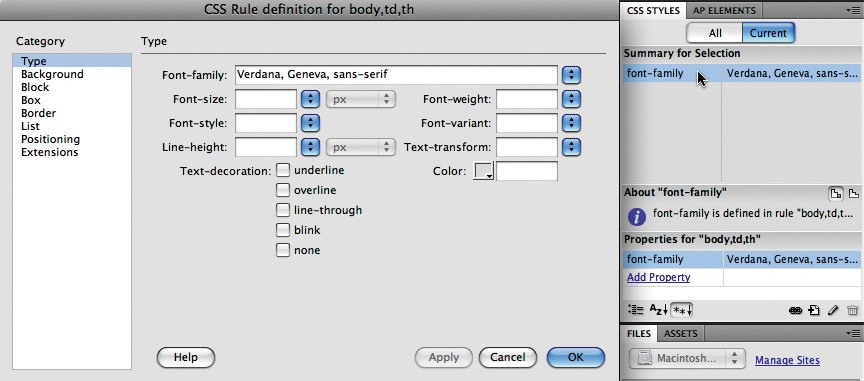
2. Create a new style using the New CSS Rule button in the lower right corner of the panel (it looks like a plus sign). Define a rule for the tag. A CSS rule is made of two parts, a selector and a declaration. The selector names the part of the HTML document that will be affected by the style. The declaration tells the HTML code how the selector is affected in the rule.
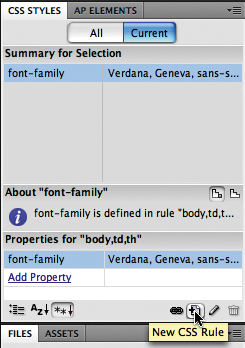
3. Leave the Selector Type pull-down menu set to Class. Our rule will format text that could be used as a headline. Name the selector .headline. Leave the Rules Definition pull-down menu on the selection “(This document only).” Click OK to exit the dialog box.
Template:Infobox
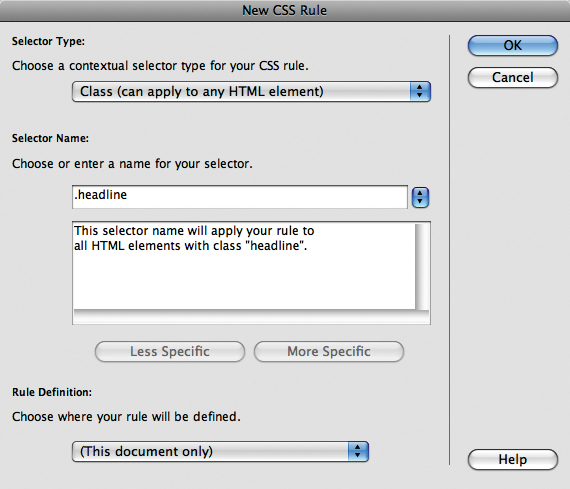
4. Give the new rule values for the declaration using the CSS Rule definition that appears for the .headline dialog box. We formatted our headline type with the following: Font-family: Georgia, Times New Roman, Times, serif; Font Size: 36 pixels; Font-weight: bold; Font-style: italic; and Color: #F00. Click OK to exit the dialog box.
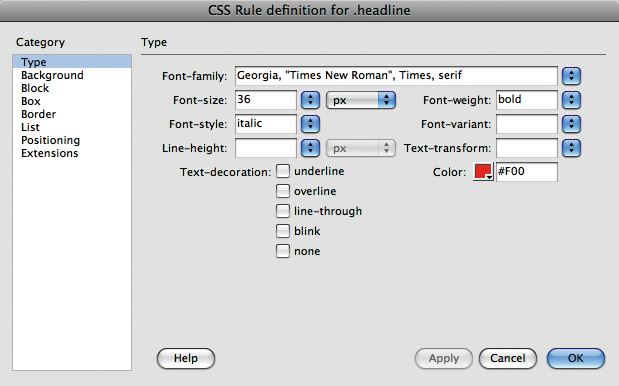
5. Now we will apply the new rule. View the HTML document in Split view mode and type the phrase “CSS Separates Form from Content” in the design area of the HTML page.
Select the phrase in Design view and apply the new rule using the Class pull-down menu in the Properties inspector. The phrase takes on the attributes that we defined in the .headline rule. Save the HTML file (Command+S).
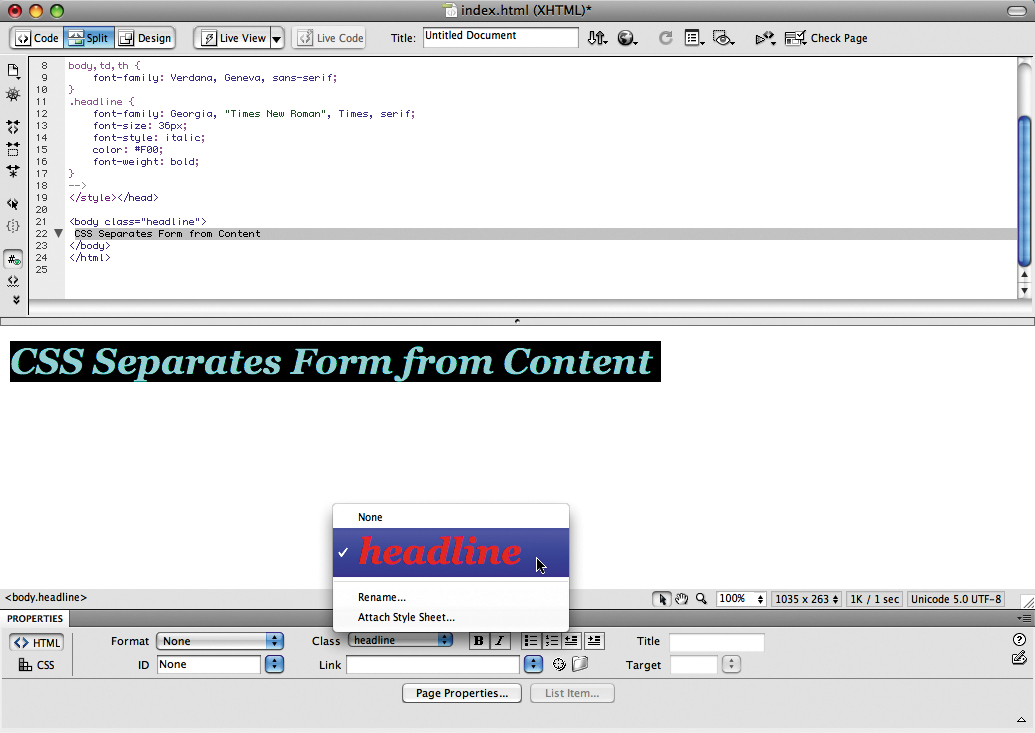
6. Evaluate the style in two places. First look in the CSS panel and notice that you can click on the All tab or the Current tab. Click on the All tab in order to see all of the styles that are defined for this HTML document.
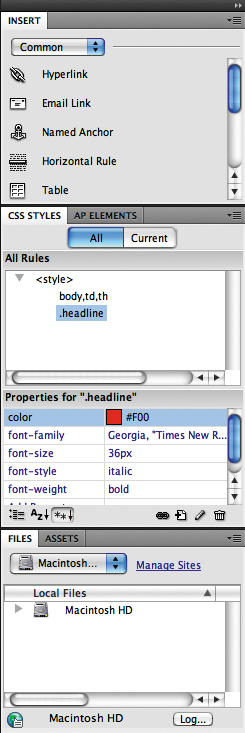
You should see the rule .headline there. You can double-click it to modify the rule. Also look at the document code area. Notice that the phrase “CSS Separates Form from Content” is written in the body area of the HTML code.This is the content on the page. The “form” of the content is applied by using CSS. In the head section of the page, the CSS code for the new rule, .headline, has been added. This rule has declarations for five different selectors: font-family, font-size, font-style, color, and font-weight. The style is actually being applied to the phrase within the body tag. Notice the additional code in the body tag, class=”headline”. Class modifies the body HTML tag so that the CSS rule .headline is applied to any content inside that tag.
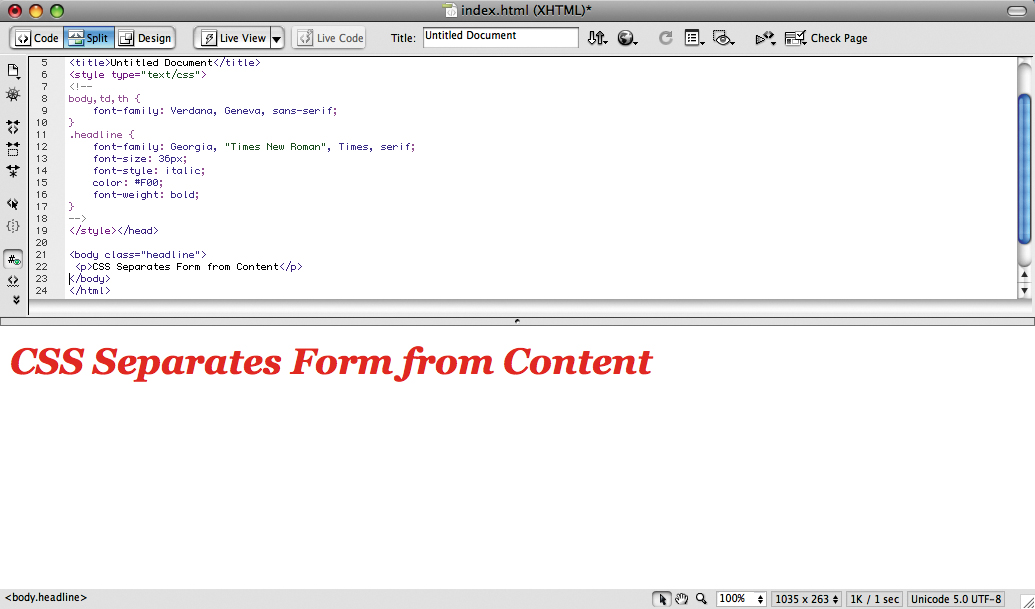
7. Since the .headline class is modifying the entire body tag, see what happens when you try to write some copy beneath the headline. In Design view, press the Return key at the end of the phrase and type in “Use the span tag to apply the class in specific areas.” Notice that this text is also formatted in large, serif, red text. In the next step we will remove the formatting from this part of the text by adding the span tag.
8. View the page in Split view. We will modify the HTML code so that the .headline class will only be applied to the phrase “CSS Separates Form from Content.” Cut (Command+X) the class="headline" portion of the code from the <body> tag and delete the space that was between the two words “body” and “class.”
In other words, the tag <body class = “headline”> becomes the tag <body>
Replace the tag
CSS Separates Form from Content
with this tag
CSS Separates Form from Content
Notice that the rest of the text, “Use the span tag to apply the class in specific areas,” is now formatted in the default text.
